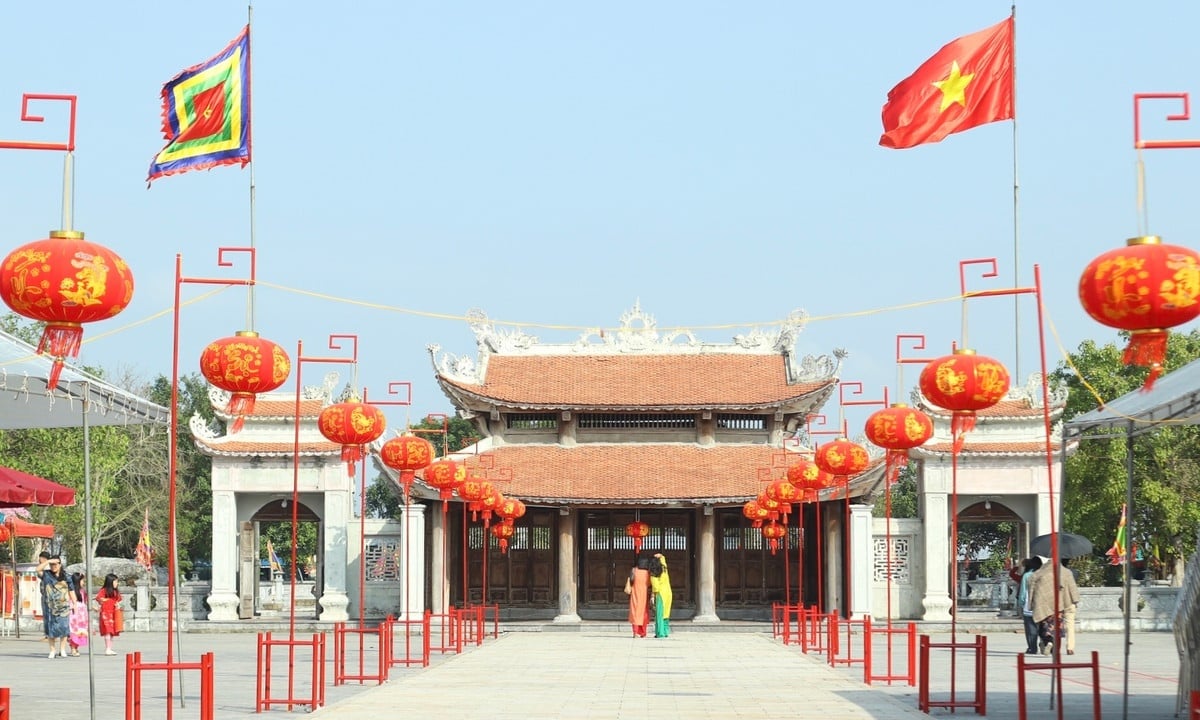
The Mac Dynasty Kings Memorial was started in 2009, in Co Trai village, Ngu Doan commune, Kien Thuy district, Hai Phong , the birthplace of the Mac Dynasty.
According to Dai Viet Su Ky Toan Thu and Dai Viet Thong Su, Mac Thai To Mac Dang Dung, born in 1483 and died in 1541, was from Co Trai village, Nghi Duong district, Kinh Mon prefecture, Hai Duong town (now Duong Thang village, Ngu Doan commune, Kien Thuy district, Hai Phong city), the 7th generation grandson of the first-ranking scholar Mac Dinh Chi of the Tran dynasty. Mac Thai To ascended the throne in June 1527. In 1529, he abdicated to his eldest son Mac Dang Doanh - also known as Mac Thai Tong, retired as the Supreme Emperor, and built Duong Kinh, the second small capital of the Mac dynasty, which was also the first coastal city of our country at that time.
In the photo is the front yard of the main hall leading to the five front gates, where events of the relic site are held.
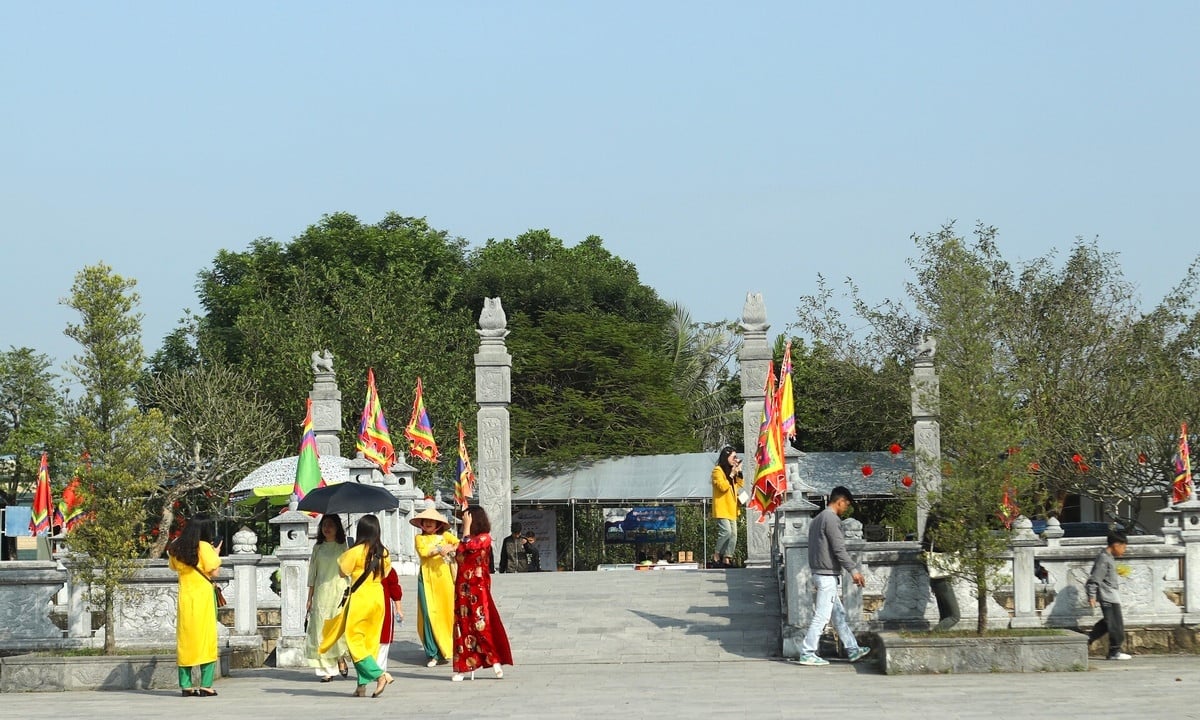
The Mac Dynasty Memorial has the typical style of a Vietnamese feudal dynasty. The Tam Quan gate (photo) has four stone pillars called Tu Tru, and a stone bridge in the middle leads across a crescent lake to Ngu Tien Mon.
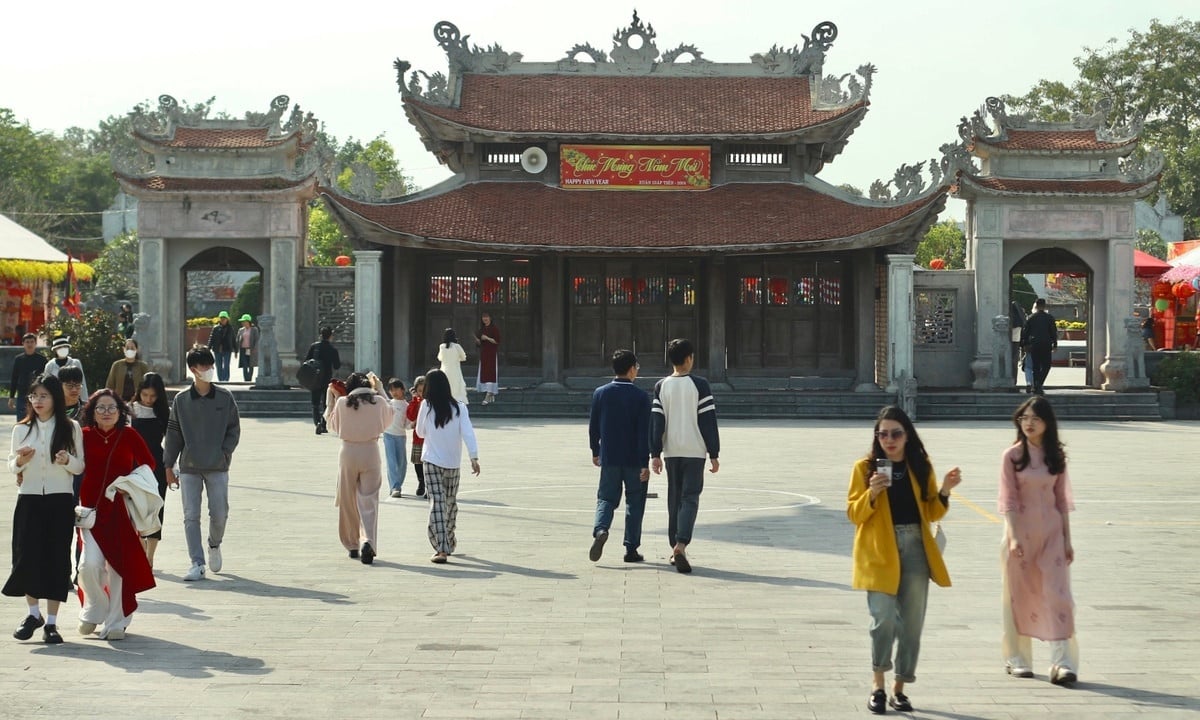
The Five Front Gates (photo) include the outer and inner gates with a structure of 4 pillars, 3 compartments, 2 floors, and 4 roofs. The three main gates are only opened on important occasions. Visitors and locals enter through two side gates, each with two stone unicorn statues on both sides.
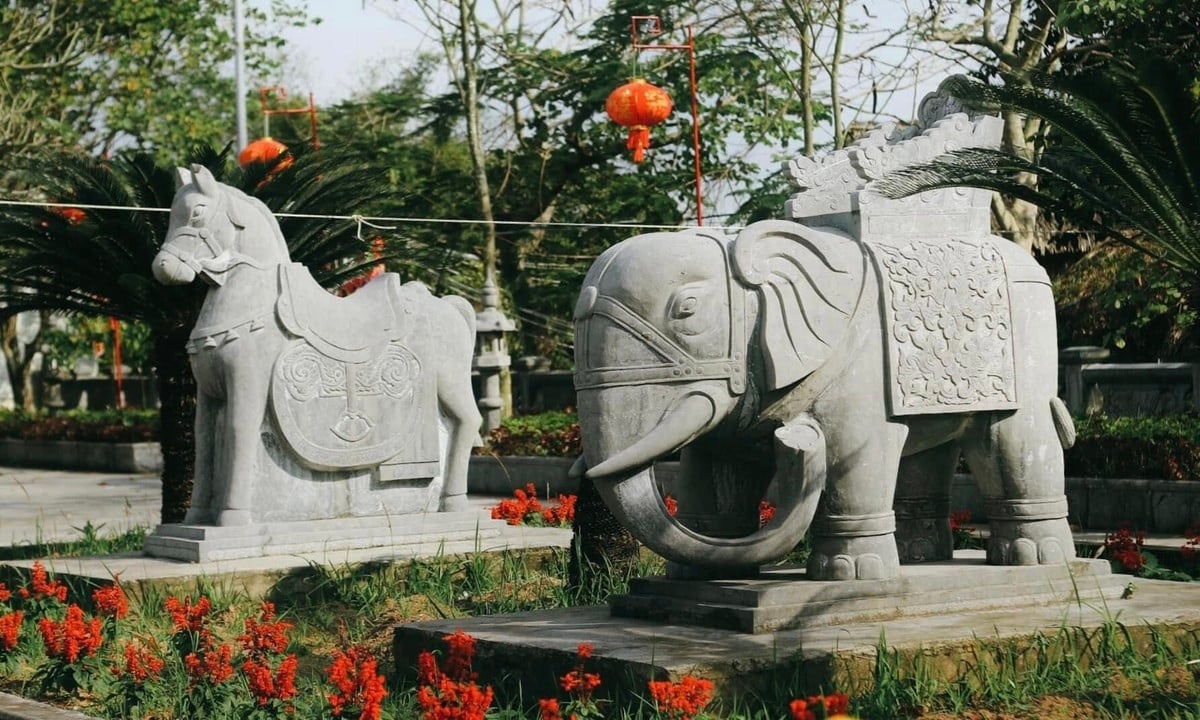
At the front gate to the main hall, visitors will see elephant and horse statues lining both sides of the yard, symbolizing civil and military mandarins who have been "summoned into statues".
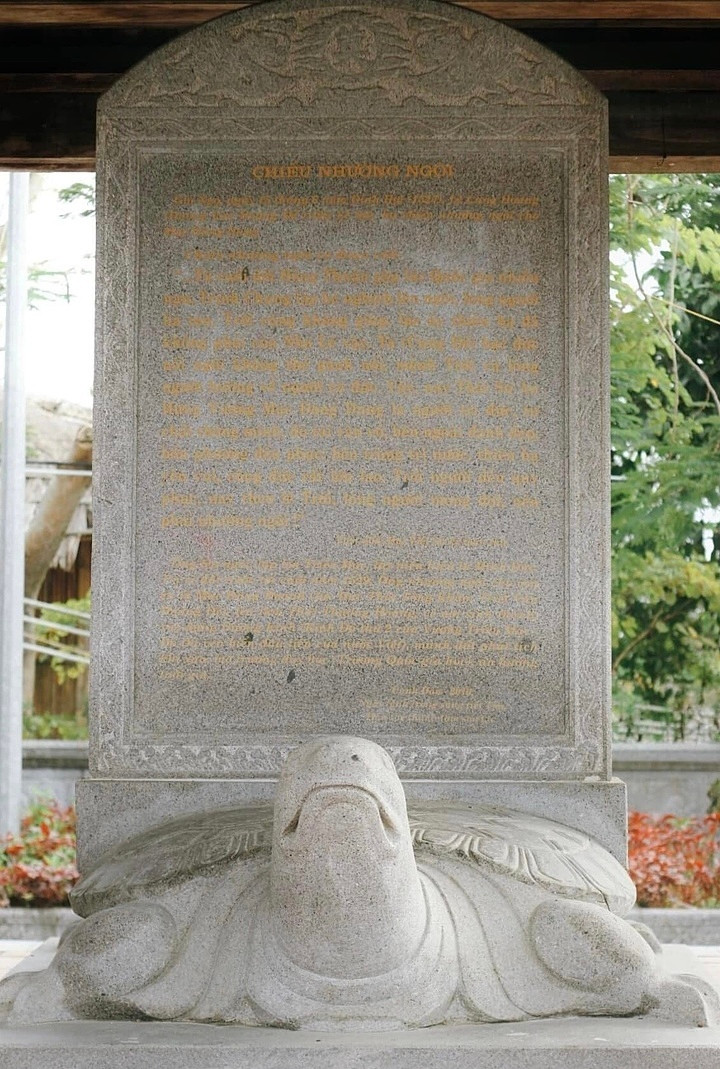
Standing out in the stone statue is a stele engraved with part of the content of the Edict of Abdication of the Throne by Le Cung Hoang (the reigning Emperor of the Early Le Dynasty) giving the throne to Grand Tutor An Hung Vuong Mac Dang Dung on May 16, 1527.
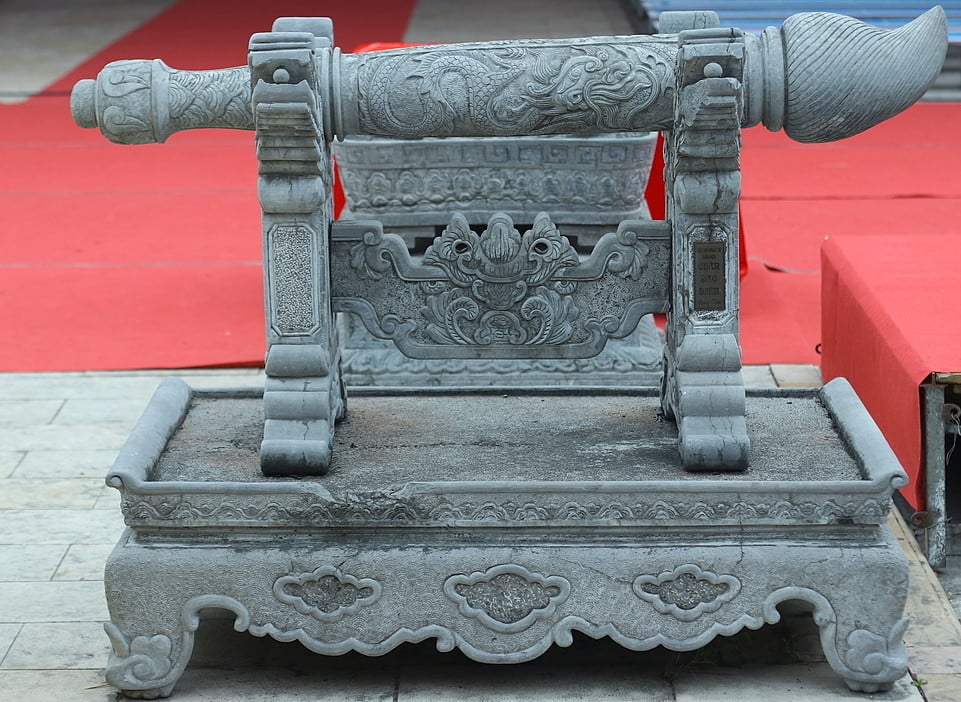
In front of the main hall is a set of pens, inkstones, and paper made of green stone, recognized by the Vietnam Record Organization as the largest in Vietnam on February 5, 2014.
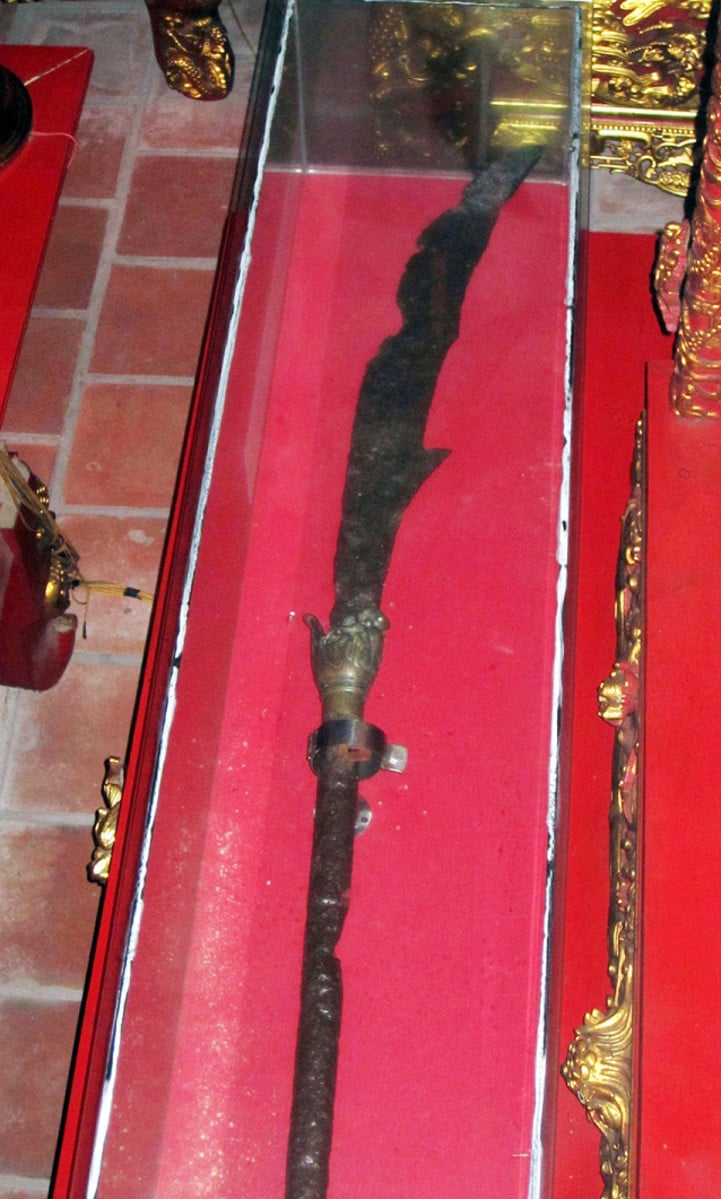
In the main hall, Dinh Nam Dao is kept, a sword that was once associated with the achievements of Thai To Mac Dang Dung, associated with the rise and fall of the Mac Dynasty, considered a "national treasure" that is more than 500 years old. On January 15, 2020, Dinh Nam Dao was recognized as a national treasure and was displayed at the Mac Dynasty relic site.
In addition to the sword, the relic site also preserves a porcelain vase with the image of the One Pillar Pagoda, the Dai Hong Chung bell, and a bronze gong engraved with a dragon.

The main hall of the temple consists of 7 rooms for the front hall, the incense burner, and 5 rooms for the back hall. On the roof are two large dragon statues made of monolithic green stone, with evenly curved bodies, resembling dragons from the Ly Dynasty. This is where the memorial tablets of the 5 kings of the Mac Dynasty are placed. Visitors to the temple are reminded not to take photos, make noise, or touch the altars.
The front yard of the main hall is also the place where many big events take place, attracting locals and tourists. The spring writing ceremony is held at the relic from the 6th to the 8th of January. Under the Mac Dynasty, training culture and talents for the country was always emphasized.
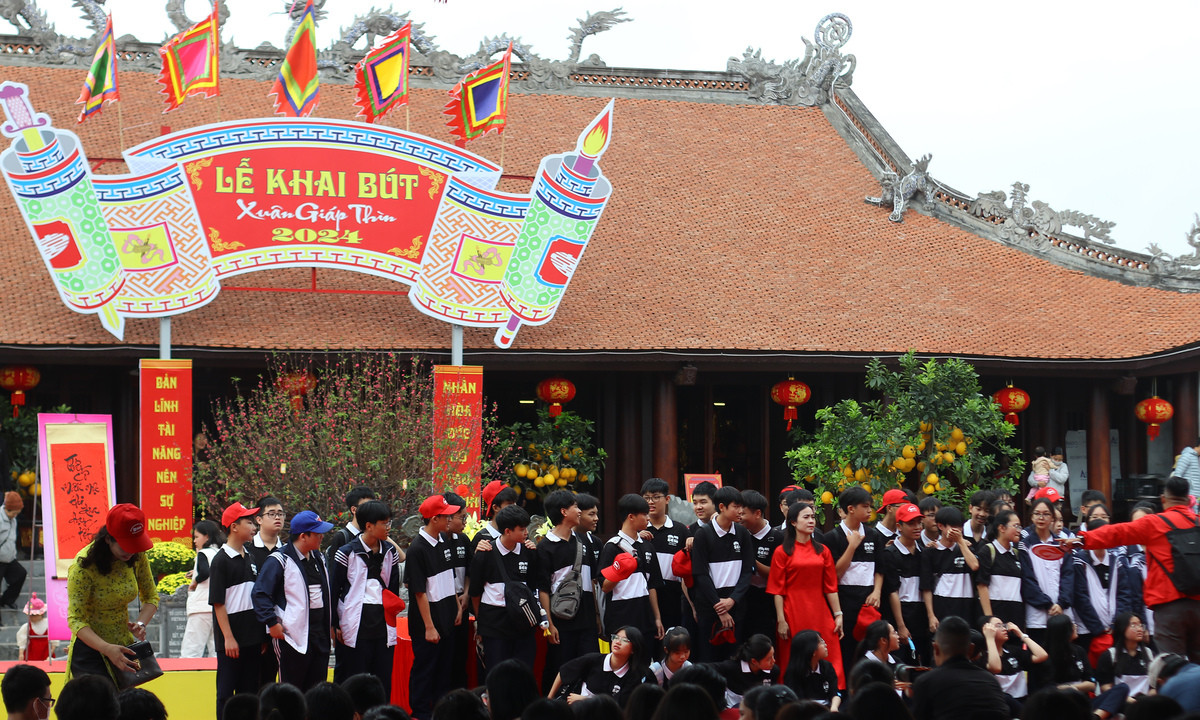
The Spring Writing Ceremony was attended by the government, local people and tourists from all over the country. Mr. Nguyen Van Thanh, Head of the Relic Site Management Board, said that this annual activity takes place at the beginning of the year, starting from 2012. In addition to commemorating and showing gratitude to the Mac Dynasty’s ancestors, the activity also aims to encourage studiousness among the city’s young generation.
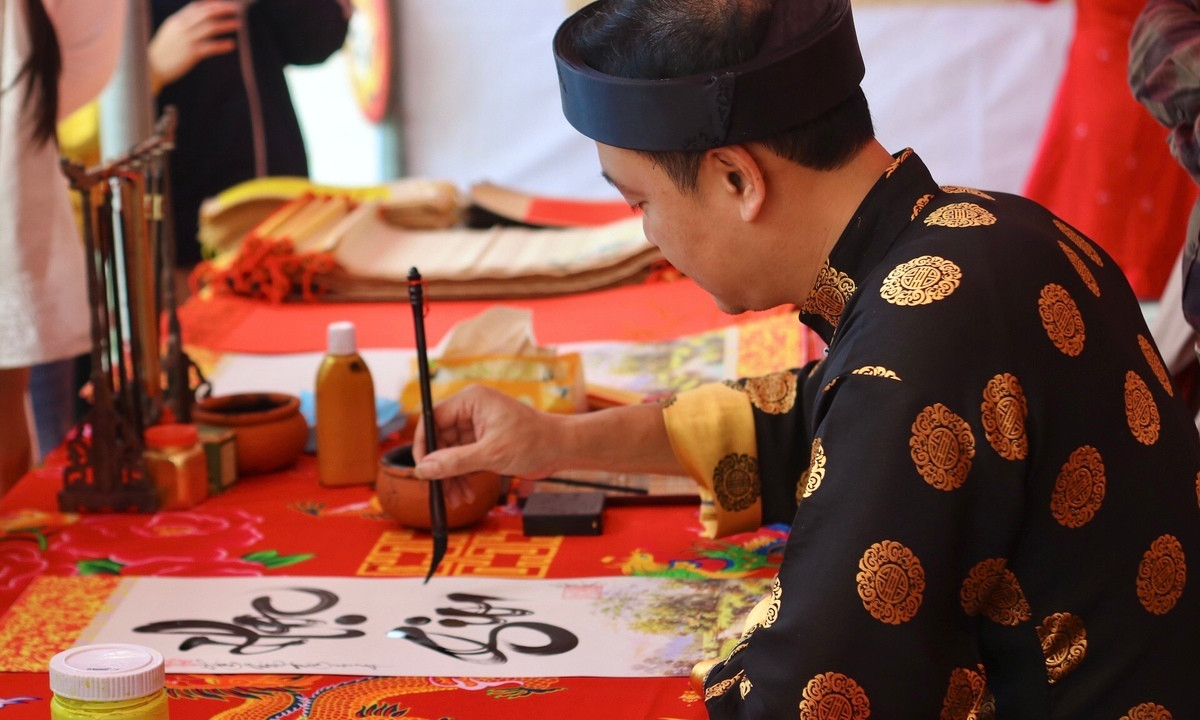
Mr. Do Manh Hien, 50 years old, Hai Phong, said he often comes to the New Year's Opening Writing Ceremony at the Mac Dynasty Memorial Site to ask for calligraphy from the teachers (photo). According to him, for the people here, the Mac Dynasty is a place that symbolizes the love of learning. Therefore, at the beginning of the year, many locals bring their children and grandchildren here to ask for calligraphy so that they will be good, study well, and succeed all year.
According to Mr. Thanh, in this year's festival, the Relic Management Board estimates to welcome about 30 - 35 thousand visitors, an increase of more than 30% compared to 2022.
The Mac Dynasty is located about 20 km from the center of Hai Phong city. Coming here, visitors can combine a visit to Tra Phuong pagoda, which preserves two national treasures: the statue of the founder Mac Dang Dung and the relief of the Queen Mother Vu Thi Ngoc Toan. In addition, in Kien Thuy district, there are also a number of national historical relics such as the Mac family's ancestral temple (Ngu Doan commune), Doai temple, and Mo temple (Du Le commune).
TH (according to VnExpress)Source



![[Photo] A delegation of 100 journalists from the Vietnam Journalists Association visits the soldiers and people of Truong Sa island district.](https://vphoto.vietnam.vn/thumb/1200x675/vietnam/resource/IMAGE/2025/5/30/0984a986227d4e988177f560d2e1563e)


![[Photo] Journalists moved to tears at the Memorial Service for the soldiers who died in Gac Ma](https://vphoto.vietnam.vn/thumb/1200x675/vietnam/resource/IMAGE/2025/5/30/9454613a55c54c16bf8c0efa51883456)

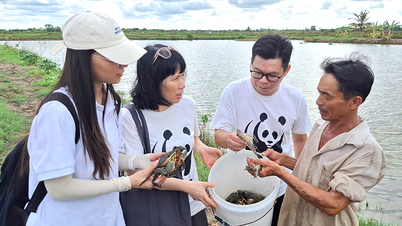













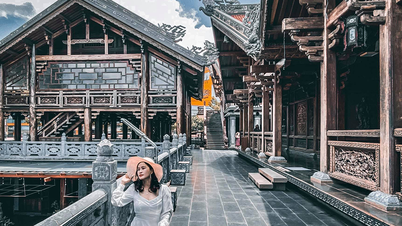


![[Photo] Prime Minister Pham Minh Chinh attends the event "Digital transformation of the banking industry by 2025"](https://vphoto.vietnam.vn/thumb/1200x675/vietnam/resource/IMAGE/2025/5/29/0e34cc7261d74e26b7f87cadff763eae)



































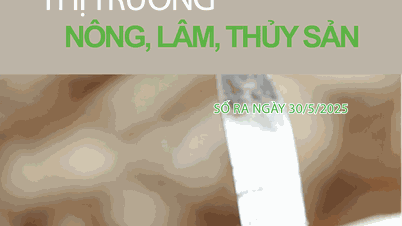

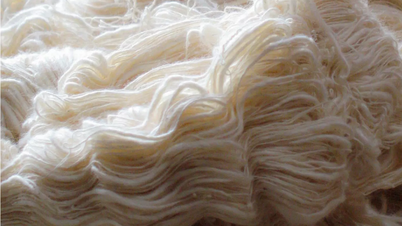




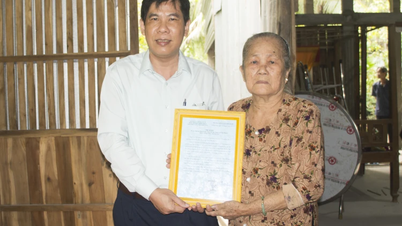


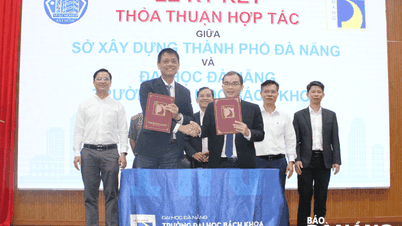















Comment (0)